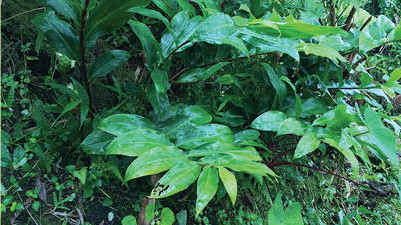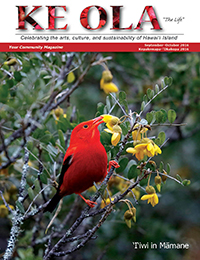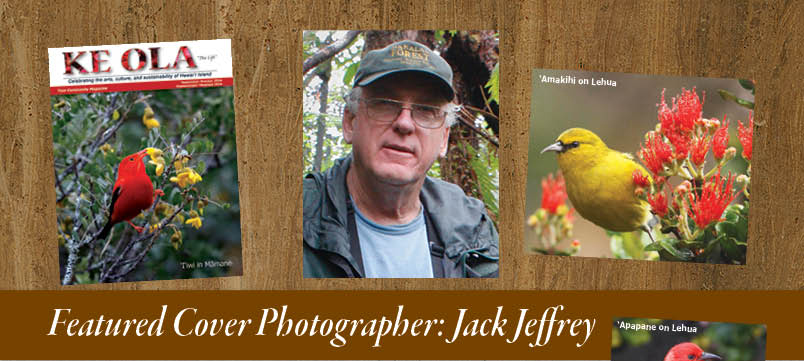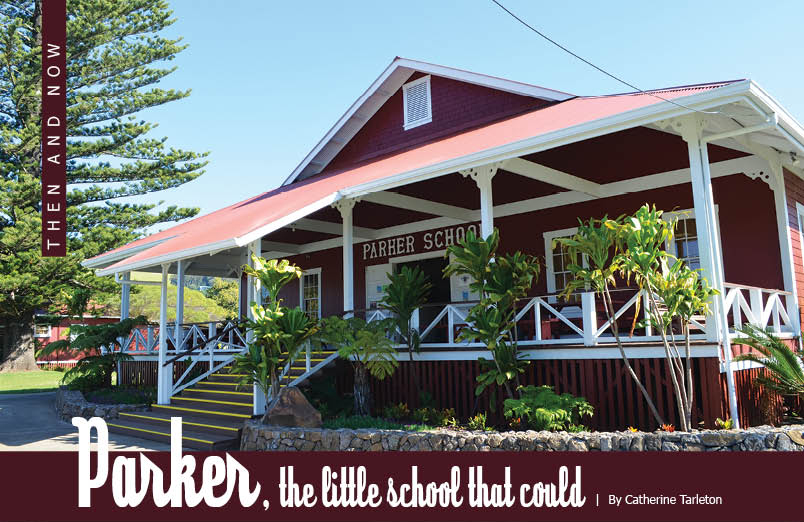
Ke Ola Pono: Lā‘au Lapa‘au—What is it?
 By Leilehua Yuen
By Leilehua Yuen
What is lā‘au lapa‘au? Is it herbal medicine? “Witch doctor” stuff? Homeopathy? Bush medicine? Is it real? Bogus? Compatible with biomedicine? I have seen practices of lā‘au lapa‘au that would fit any of the above.
Lā‘au lapa‘au is a traditional medical practice, as defined by the World Health Organization: “Traditional Medicine is the sum total of the knowledge, skills, and practices based on the theories, beliefs, and experiences indigenous to different cultures, whether explicable or not, used in the maintenance of health as well as in the prevention, diagnosis, improvement or treatment of physical and mental illness.”
Lā‘au, in this context, means medicine. The larger meaning is trees and plants. So, yes, lā‘au lapa‘au is herbal medicine.
Originally, of course, it used only native Hawaiian plants (those which were here growing wild when the first settlers arrived), naturalized plants that were brought by the settlers and escaped into the wild, and kanu plants (those cultivated for specific purposes).
Lapa‘au is medical practice. So, lā‘au lapa‘au is a medical practice which specializes in using plant-based medicines.
In my own experience, most Western-trained doctors have been respectful and interested in learning about lā‘au lapa‘au. Laymen have been the ones more antagonistic toward the practice, considering it “witch doctor” medicine. The easy answer is that this comes from watching too many old movies!
A deeper conversation with them finds that often people who have only been exposed to biomedicine see a dichotomy between physical and spiritual health. You go to a doctor to heal your body, and you go to church to heal your spirit.

In Hawaiian medicine, this is not the case. Pule (prayer) is an important part of lā‘au lapa‘au. I was taught that the body cannot fully heal if the spirit is not healed as well. People who have never experienced this integration of physical and spiritual sometimes do not see the relevance of prayer and ceremony, and associate it with “Hollywood witch doctors.”
I would consider lā‘au lapa‘au to be like bush medicine, though I associate that term with Australia.
Yes, it is real, and used appropriately can be an important and effective part of health maintenance.
Yes, there are some bogus practitioners and many bogus preparations on the market.
Is it compatible with biomedicine (Western/modern medicine)? I would give that a qualified “yes” with cavaets.
Some herbal preparations should not be used with some biomedicines. For example, ‘awa (kava) is known to interact with 562 drugs used in biomedicine. Some of the interactions are insignificant, some may be beneficial in certain circumstances, and some can be very problematic.
Those choosing to combine modalities should work with both the kahuna lā‘au lapa‘au and MD so that they each are aware of the other treatments and can provide the most beneficial synergy for the patient.
Something I hear a lot these days that really bothers me is people saying that they only want to take “natural” remedies, nothing with “chemicals.” E kala mai! EVERYTHING we ingest is made from chemicals, and there are a lot of harmful natural things. Taken improperly, some lā‘au can actually be toxic. Overuse of lā‘au can be as harmful as overuse of any other medicine. ‘Awa misuse can lead to scaly skin rashes, eye inflamation, trembling, liver and kidney damage. Noni misuse can lead to stomach problems and kidney damage due to the high potassium content.
Because lā‘au growth is affected by soil and weather conditions, time of year, and a myriad of other things, the active chemicals are not always consistent as those prepared by quality pharmaceutical companies. The knowledgable and skillful practitioner knows how to compensate for the differences and craft medicines that are equally effective in their own scope.
Lā‘au lapa‘au is most effective when used as part of a wholistic lifestyle incorporating practices that encourage and integrate spiritual, mental, physical, and environmental health. This means caring for the environment where the lā‘au grows, planting appropriately, or wildcrafting with care and respect. It means harvesting properly, without abusing or stressing the resource. It means being in harmony with the people around us. It means caring for our own bodies as our most immediate environment.
“E ke Akua, e aloha mai ‘oe i ka mea i mi ia . . .”
O Deity, give love to the one who is sick. . .
A favorite lā‘au for skin and hair
This freshens and rejuvenates dry skin and scalp. Be sure to do a small test patch and check for irritation.
Ingredients
3 ripe heads ‘awapuhi (shampoo ginger)
5 inches ‘awapuhi root
1 quart water
Thoroughly scrub the root to remove all dirt and skin. I use a small wire brush. Grate the root very fine. Bring the water to a boil and add to the root. Allow to cool. Strain. This may be misted on, or patted onto the skin and scalp as needed. Keep in the refrigerator. I do not keep it longer than three or four days. For added benefit and to tighten skin, massage the viscous liquid from the ‘awapuhi heads into skin and scalp, let dry, then rinse off. ❖
Contact writer Leilehua Yuen


